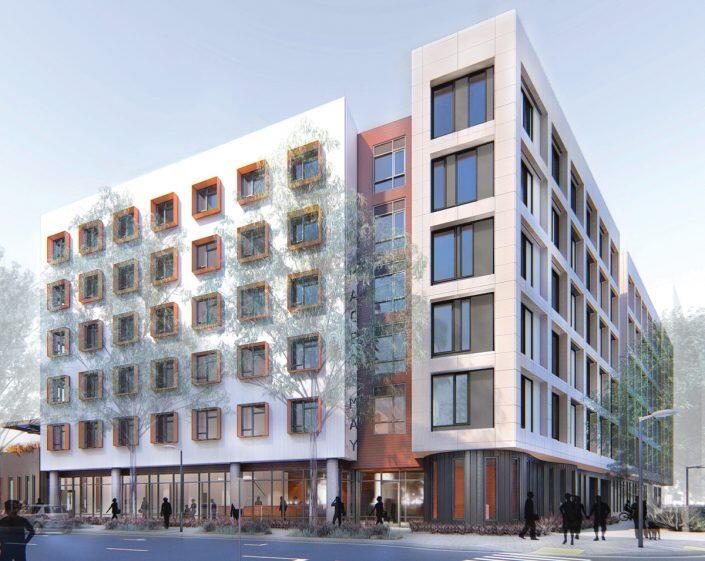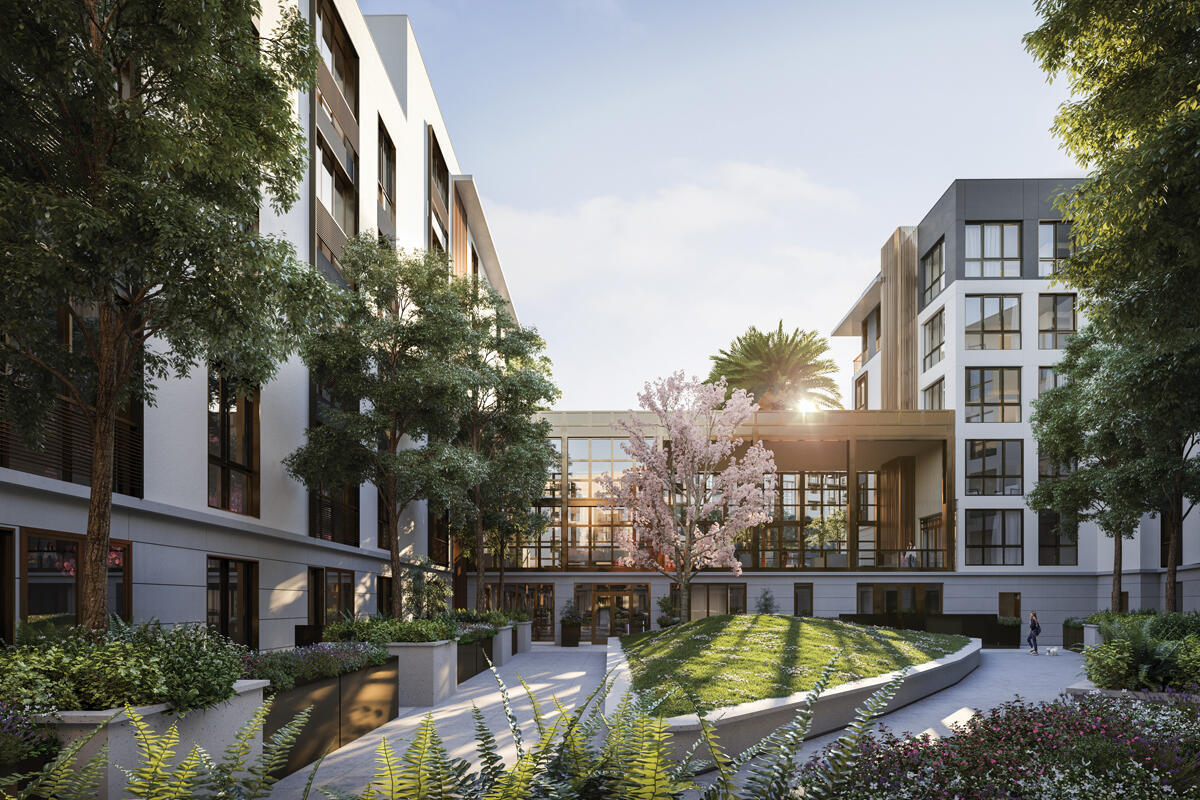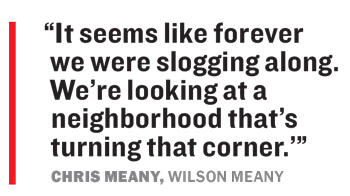Treasure Island has been a lot of things in the 85 years since its birth out of the mud dredged from the San Francisco Bay for the 1939 Golden Gate International Exposition. Flying boats operated by Pan American used its cove as a launching pad for trans-Pacific routes.
As a military base from World War II through the first Gulf War, it housed a school where soldiers and sailors learned to respond to nuclear attacks. From the 1980s, its empty airplane hangars even served as studios where the “bullet time” sequences in “The Matrix” and scenes from many other Hollywood blockbusters were shot.
One thing Treasure Island and its conjoined twin, Yerba Buena Island, have never been: a self-sustaining neighborhood.
The islands share fewer than 3,000 people, all of whom rely on cars or express buses to reach the rest of the city. They lack a public school or supermarket and have just a handful of stores and restaurants. Most visitors are day-trippers headed to the monthly flea market or Little League games played against postcard views of the bay.
Almost a quarter-century after the military left, that may be about to change. The first of some 8,000 new housing units are under construction, and an influx of residents is due to arrive early next year. Treasure Island developers are building everything from a ferry terminal to an arts-and-entertainment district. Rocky Yerba Buena will house 266 luxury homes and a five-acre hilltop park designed by the winner of a MacArthur “Genius Grant.”
“It seems like forever we were slogging along,” said Chris Meany, managing partner of Wilson Meany, one of the islands’ developers. “We’re looking at a neighborhood that’s turning that corner.”
After more than two decades, the $6 billion project is tantalizingly close to reality, even though many more years will pass and plenty of challenges must be surmounted before the newcomers get all the promised amenities.
Among the issues: a class-action suit by current and previous tenants alleging dangerously high radiation levels on Treasure Island. Planners are also struggling to meet the 27 percent affordable housing set aside in the master plan after funding dried up in the wake of the state’s decision to shutter its redevelopment agencies in 2011.
More recently, hackers absconded with more than half a million dollars from One Treasure Island, a nonprofit that aims to provide housing and job opportunities to low-income and homeless people and has been involved in the redevelopment since its inception.
“It’s taken a lot of years, a lot of people and a lot of money,” said One Treasure Island executive director Sherry Williams. “But at the end of the day, it’s going to be completely worth it.”
An economic balancing act
When the Navy base closed in 1997, part of a wave of military shutdowns, San Francisco Mayor Willie Brown approved ideas ranging from a women’s jail to a vacation spot with a golf course and theme park. He formed the Treasure Island Development Authority to manage the development of its more than 400 acres of underutilized land.
Then came the environmental-impact reports, community meetings, cleanup and infrastructure improvements, not to mention several lawsuits, including the ongoing class action seeking to block redevelopment and $2 billion in damages, claiming that radiation levels are higher than the Navy found in a 2006 survey.
Work never stopped, even as three subsequent mayors came and left. Finally, in July 2019, construction crews broke ground on the project’s first housing, the Bristol condominiums on Yerba Buena. The first residents are due to move in by February, settling into studios that top $800,000 and three-bedrooms reaching $3.4 million.
Besides the condos, the development will also have townhomes, full-floor flats and a handful of bespoke single-family residences. Pricing for that limited offering is about two years out, Gasbarre said, but a two-bedroom townhome starts in the mid-$3 million range and three-bedroom, full-floor flats are in the low $4 millions.
Meany says he’s been working with mostly local architects and designers to create an islandwide aesthetic on Yerba Buena that emphasizes San Francisco’s natural resources. For shops, restaurants and nightlife, Yerba Buena residents will have a 15-minute walk or short shuttle-bus ride to Treasure Island, where 140,000 square feet of commercial and retail space is taking shape.
Only residents of the smaller island will have access to the Island Club, complete with a spa, private dining room, game room and view terraces, as well as indoor and outdoor fireplaces. And of course there’s a gym, an outdoor heated lap pool and weight, cardio and yoga rooms. Workers haven’t broken ground on the club, as developers, wrapping up the condos, switch their attention to Yerba Buena’s full-floor flats and townhomes.
“Our buyers recognize the advantage of buying early and they’re getting really competitive pricing right now,” said Tom Gasbarre, director of sales for the island. “They’re willing to take the step with us knowing that these things are coming.”
Not everyone is an early adopter. Some, Gasbarre said, are put off by the fact that there’s no school on either island, while others find even the current “incentive pricing” out of reach. Units are priced around $1,400 per square foot, depending on the view, compared with as much as $4,000 for some luxury condo offerings in the city, Gasbarre said.
On top of that are homeowner association fees that will be somewhere between $1,100 and $1,400 per month. The fees include all the Island Club and Bristol amenities, a shuttle service around both islands, a ferry pass and 24-hour security — none of which is yet in place.
Only 5 percent of Yerba Buena’s units are set aside for affordable housing, meaning that the bulk of the 27 percent target will need to be met by Treasure Island.

Rendering of the Maceo May apartments, affordable housing for veterans and the first housing to break ground on Treasure Island (Mithun Solomon)
One reason is a tradeoff the city made with the State Lands Commission to allow more building closer to the shoreline on Treasure Island in exchange for less on Yerba Buena, said Robert Beck, executive director of the Treasure Island Development Authority. Another is that market-rate properties will help pay for the biggest addition to the city’s parks system since Golden Gate Park as well as infrastructure costs, such as adding 1.25 million cubic yards of dirt to keep Treasure Island safe from rising seas.
“It’s all part of an economic balancing act that makes the program feasible,” Beck said.
Complexity and opportunity
Natalie Bonnewit, an affordable-housing consultant for One Treasure Island, said she’s never worked on a project that has so many “future economic opportunities baked into the deal.” Employers must set a goal of hiring economically disadvantaged staff for at least a quarter of their workforce. One Treasure Island has the right of first offer for all janitorial and landscaping services, which means it can bid on the services before any other competing contractors.
The nonprofit has also been granted retail and cafe space, as well as a three- to five-acre farm, all of which will offer jobs and job training to those with barriers to employment such as a criminal record or minimal education.
Eventually, “everyone from the person that painted or built your unit to the person serving you your cup of coffee to the person that grew the chard you’re eating in your salad” will come from One Treasure Island’s training programs, said Williams, its executive director.
The group had more than $650,000 set aside to help Mercy Housing California kickstart pre-development of a 138-unit building for low-income families earlier this year. Then Williams discovered One Treasure Island had been victimized by an email hack that diverted the funds to a bank in Texas.
While Williams doubts the nonprofit will ever retrieve all of the missing cash, she said the FBI has opened a case and the hackers were “not getting away with or hurting our ability to provide affordable housing.”
Even without the theft, financing affordable housing will be an uphill climb. Williams calls that “excruciatingly painful” given all the planning and work that has already gone into the project. Yet she also said that although the redevelopment has “layers upon layers of complexity, it has layers upon layers of opportunity, too.”
Many of the island’s current renters will have priority for affordable housing after their former Navy homes are razed to create wetlands as part of the master plan for the community. At first, only those who lived on the island when the city approved the project in 2011 were set to be at the front of the line for new on-island housing or to receive a relocation payout instead. In late 2019, the city extended those protections to all residents on the island at that time, as long as they met certain income requirements.
“It’s not a guarantee for all residents, but it is for the most vulnerable of our residents,” the Development Authority’s Beck said.
Planned tolls for Treasure Island are another source of conflict. Residents currently don’t have to pay to cross the Bay Bridge into San Francisco proper, while drivers coming from Oakland pay between $3 and $7. Final toll policies haven’t been adopted. Beck said the plan is for current residents and affordable-housing staff to be exempt until the “mid-point” of the development in a few years, when there should be more on-island amenities, as well as ferry service into the city.
The ferry terminal, due to open early next year, is an essential component of the plan, although the 50-person boat will be privately run and subsidized by Yerba Buena Island developers at first. When the islands hit a critical mass of residents, Treasure Island will get a ferry service similar to the boats that now travel between San Francisco and the North and East bays.
Beck said he can imagine a future when San Franciscans cap off a morning at the Ferry Plaza Farmers Market with a seven-minute ferry ride to bike or walk around 290 acres of open space and visit new restaurants, shops and entertainment venues.
“It becomes an extension of a day in the city,” he said.

